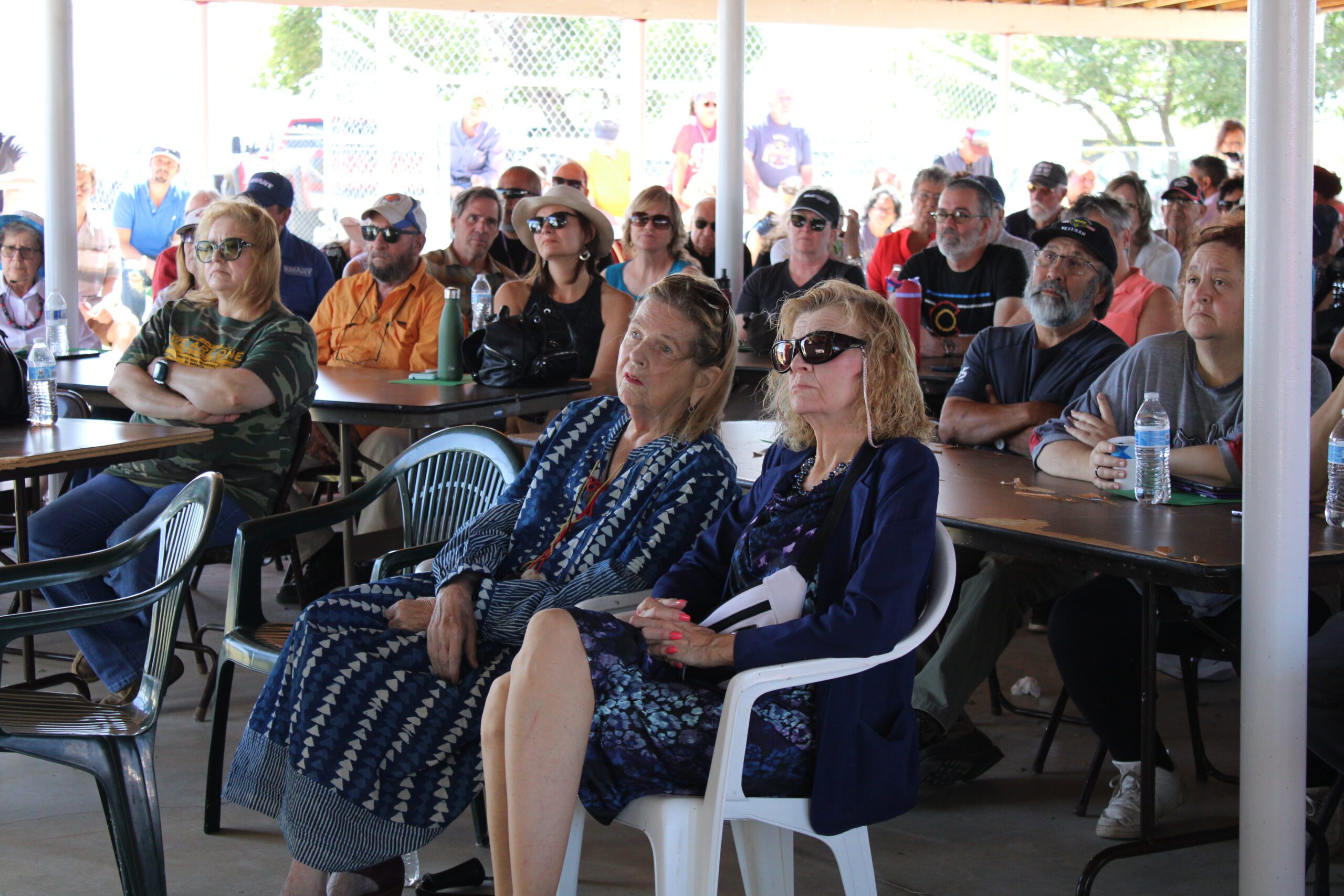Source: World Journal
Date: June 26, 2025
Hundreds gathered at UMWA site for 111th annual memorial ceremony

LUDLOW — Relatives of those involved in the labor struggles of southern Colorado and northern New Mexico in the early 20th century, history enthusiasts, and others from across the state, region and nation gathered on a hot windy morning to remember and mourn those lost that day in April 1914.
The attack on striking coal miners and their families by the Colorado National Guard and Colorado Fuel and Iron Company guards at the Ludlow tent colony resulted in the deaths of 25 people, including 11 children. Visitors pulling into the gravel parking lot are literally within the war zone in which miners and their families found themselves, less than 40 yards from the infamous ‘death pit’.
It is a powerful realization. The flat lands surrounding the massacre site show there were few places to hide from the gunfire of hired company guards, state militiamen, and Colorado National Guard soldiers, so pits were dug under their tents to protect strikers and their loved ones from mine owner sponsored security forces.
The similitude of uniformed military personnel facing off against unarmed civilians, nearly all with foreign-sounding surnames, is not lost on those watching or reading contemporary reports on current government action against suspected illegal migrants to the United States.
The 111th annual Ludlow Massacre Memorial service was very well attended on June 22 at the United Mine Workers of America site in Las Animas County.
Before the memorial service was held, attendees milled around the site, sharing stories, learning facts from interpretive signage, and talking with one another. While at times light-hearted laughter filled the air, there remained a sense of the serious nature of the annual gathering.
The Strike:
An estimated 10,000 miners under the direction of the UMWA had gone on strike September 13, 1913, protesting low pay and abysmal working conditions in the coalfields of southern Colorado. Evicted from the company towns by the operators of industrialist John D. Rockefeller’s Colorado Fuel and Iron Company (CF&I), striking miners constructed tent colonies.
The largest, at Ludlow, had a population of about 1,200 miners and their families. The striking miners were a mixture of ethnicities, including a large number of Greeks and Italians.
Tensions were high between the armed strikers and the company-hired detectives. The Colorado National Guard, which had been deployed to reduce violence, favored the operators by escorting strikebreakers to the mines and overlooking the violent actions of the private detectives, although there are few records indicating the national guard actually intervened in these confrontations.
Preparing for a Fight:
In April 1914 although the Colorado National Guard presence was reduced, violence levels increased. On Sunday, April 19, 1914, the remaining national guardsmen surrounded the Ludlow tent colony and set up a machine gun on a nearby ridge.
No one knows exactly what instigated the violence; though contemporary accounts suggest demands were made that miners turn over at least one striker or hostage, and they refused.
The guard opened fire, and the ensuing pitched battle lasted throughout the day. Three strike leaders, including labor organizer Louis Tikas, were captured and killed by the National Guard; allegedly while Tikas had gone out to discuss a truce.
As their ammunition supplies dwindled, the strikers retreated from the camp into the surrounding flat country. Women and children remained in place, where they had hidden in the pits beneath their tents to escape the day’s gunfire.
As darkness fell, Colorado National Guard troops soaked the tents in kerosene and set them on fire. In one cellar 11 children and 2 women were found burned and suffocated; this is the infamous ‘death pit’ at Ludlow.
Of the 25 people killed during the Ludlow Massacre, three were National Guard troops.
Massacre Aftermath:
In response to the massacre, the striking miners attacked anti-union town officials, strikebreakers, and the mines. They ultimately ended up taking control of a huge hunk of land, which included locations up into Huerfano County. All told, up to 50 people died as a result of the massacre.
News of the altercation made it all the way to the White House. Then U.S. President Woodrow Wilson was horrified by the violence, and he sent in federal troops to try to restore order to the chaos. These new troops succeeded where the National Guard had failed, because they actually maintained neutrality and kept the strikebreakers out of the coal mines. The strike officially ended December 10, 1914.
Though 400 miners were put on trial, none ended up being convicted. Twelve National Guardsmen were likewise exonerated.
The strike didn’t ultimately do much for the rights of the workers, who got very few benefits granted to them in the aftermath. What it did do however, was shine a national spotlight on their plight. The UMWA ended up gaining 4,000 new members, and the memory of the event eventually led to significant worker and labor reform.
Written by: E.E. Mullens

